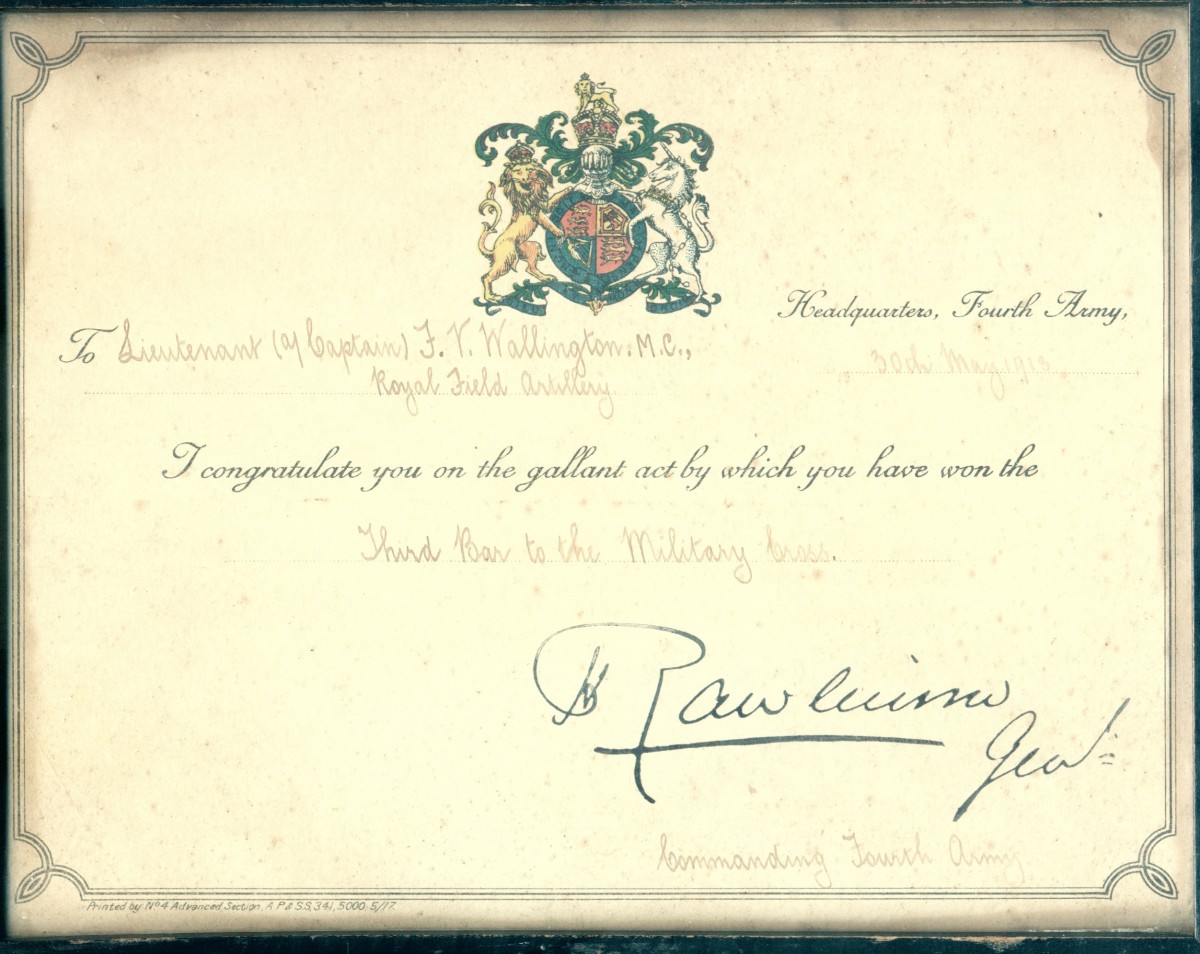Military Cross and Three Bars – Lieutenant Francis Victor Wallington MC RA
One the finest regimental collections in the British Army, the Royal Artillery Museum medal collection features over 10,000 medals and decorations. Behind a great many are stories of service, sacrifice and often incredible bravery. Among them is that of Lieutenant Francis Victor Wallington, the first of only four men ever to be awarded the Military Cross four times.
Joining the Royal Artillery as a Gunner in 1905, Francis Wallington was commissioned as a Second Lieutenant on 30 May 1916. He was first awarded the Military Cross in January 1917 for his actions at Beaucourt. The citation in the London Gazette (the official government newspaper in which most gallantry awards are announced) stated that it was ‘for conspicuous gallantry in action. He displayed great courage and skill during wire-cutting operations in preparation for the attack. Later, he brought a trench mortar forward to an exposed position under heavy fire.’ (Gazette supplement 29921).
The following August he received his first bar ‘for conspicuous gallantry and devotion to duty. He showed great coolness and courage under heavy shell fire on many occasions. A fire having broken out in a neighbouring battery's gun pits, he volunteered to extinguish it, which he succeeded in doing, working all the time under heavy shell fire.’ (Gazette issue 30234).
Within a fortnight he learned that he was to receive a second bar ‘for conspicuous gallantry and devotion to duty in rushing to a dug-out in which men had been buried by shell fire and attempting to dig out the men, aided by two other officers. He himself was in a state of collapse, but insisted on helping to carry the wounded to a dressing station under shell fire.’ (Gazette supplement 30251)
He was invested with the third bar to his Military Cross, which was announced on 10 July 1918 (Gazette supplement 30901), ‘for conspicuous gallantry and devotion to duty under close enemy machine-gun fire. This officer took forward two teams and succeeded in moving off two guns. One of the teams was shot down, but he succeeded in bringing in the other gun. His gallantry and devotion to duty during recent operations was most marked.’
Retiring in 1923, Francis Wallington later worked in the Royal Artillery Record Office before serving again as a Captain and administrator for an anti-aircraft unit in the Second World War


